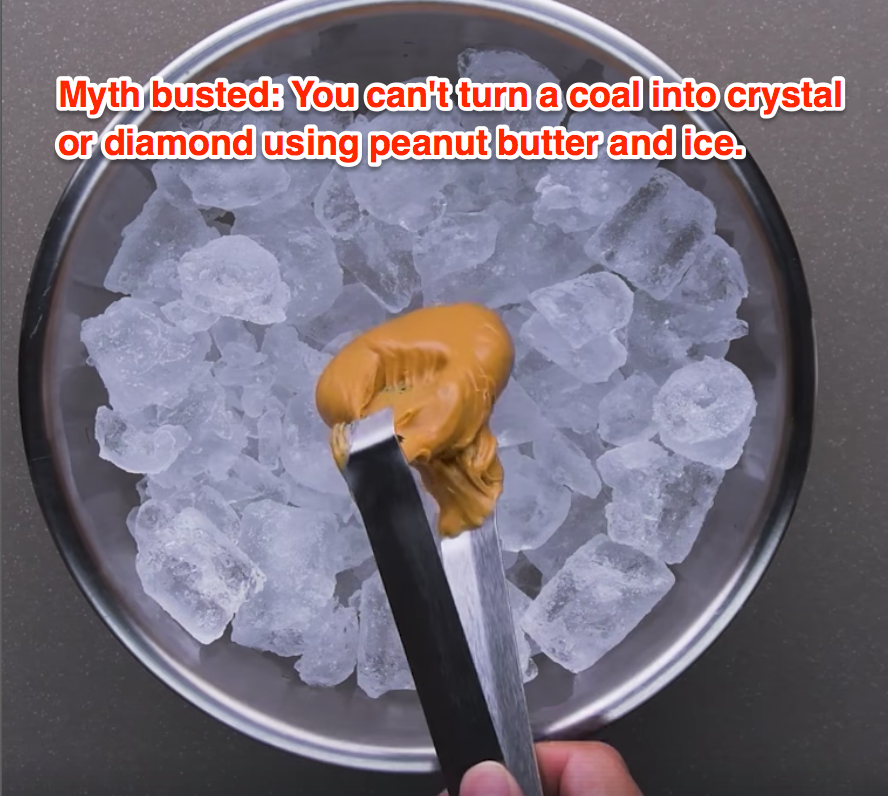With the proper extremely high temperature and pressure you can turn peanut butter into diamonds scientists have replicated the usually 3 billion years process in a lab with carbon rich peanut butter

With the proper extremely high temperature and pressure, you can turn peanut butter into diamonds


Introduction
Have you ever wondered if peanut butter could be transformed into a precious gem? It sounds like a science fiction concept, but scientists have actually achieved this remarkable feat. By subjecting carbon-rich peanut butter to extreme heat and pressure, researchers have successfully recreated the process that takes nature approximately 3 billion years to form a diamond. This incredible experiment demonstrates the incredible potential of scientific innovation and sheds light on the fascinating world of gem formation.
Understanding the Diamond Creation Process
Diamonds are formed deep within the Earth’s mantle under intense heat and pressure. The process begins when carbon atoms arrange themselves in a crystal lattice structure, creating the unique characteristics of a diamond. This natural process takes billions of years, involving incredible geological forces.
Replicating Nature’s Miracle
Intrigued by the mysteries of diamond formation, scientists decided to replicate the process in a laboratory setting. They chose peanut butter as a carbon source due to its high carbon content and availability. Through careful experimentation, they discovered that subjecting the peanut butter to extremely high temperatures and pressure could initiate the transformation into a diamond.
The Experiment
The experiment involved placing peanut butter in a high-pressure diamond anvil cell, which could exert pressures over 725,000 pounds per square inch. To reach the necessary temperatures, an electric arc furnace was utilized. The combination of extreme heat and pressure forced the carbon atoms in the peanut butter to rearrange themselves, eventually forming a small, yet genuine, diamond.
The Significance of the Achievement
The successful transformation of peanut butter into diamonds in a lab setting is a significant breakthrough in scientific research. It not only proves that diamonds can be created synthetically, but it also provides valuable insights into the conditions required for natural diamond formation. This knowledge can potentially lead to advancements in various industries, including technology, where synthetic diamonds are used in various applications.
The Future of Lab-Grown Diamonds
Lab-grown diamonds, such as those created from peanut butter, have gained popularity due to their ethical and sustainable nature. Unlike diamonds obtained through traditional mining practices, lab-grown diamonds have a minimal environmental impact and do not contribute to human rights concerns. As technology continues to advance, the production of synthetic diamonds is expected to become more efficient and cost-effective, making them increasingly accessible to consumers.
Conclusion
The transformation of peanut butter into diamonds highlights the incredible capacity of science to mimic nature’s most extraordinary processes. This groundbreaking experiment not only unlocks the possibility of creating synthetic diamonds in a controlled environment but also provides valuable insights into the formation of natural diamonds. As the demand for ethical and sustainable diamonds continues to grow, lab-grown diamonds may increasingly become a popular alternative. By pushing the boundaries of scientific exploration, we discover new frontiers in technology and gain a deeper understanding of the world around us.
Source: Popular Mechanics
Related Posts
Quick Links
Legal Stuff

